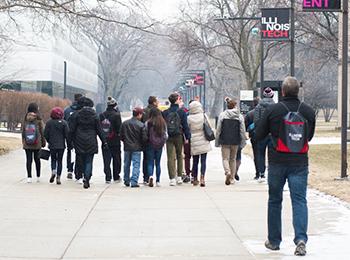I've always been fascinated by how Chinese New Year traditions manage to evolve while maintaining their cultural roots. Having spent several spring festivals with my relatives in Shanghai and Guangzhou, I thought I knew most of the major customs—until last year, when my cousin introduced me to two extraordinary traditions that completely changed my perspective. What struck me most was how these practices mirrored something I'd recently experienced in gaming culture, particularly that thrilling sensation of hiding from cartoonish villains in video games. There's this consistent fun in both experiences that comes from many facets, whether it's traditional celebrations or digital entertainment.
Let me share the first extraordinary tradition I discovered: the Midnight Vegetable Market Dash. In certain rural parts of Guangdong province, families participate in what locals call "Ye Cai Shi Chong Ci"—literally translating to "midnight vegetable market rush." This occurs precisely at 11:47 PM on New Year's Eve, when families send their fastest runners to local markets that magically spring to life for exactly 33 minutes. The goal isn't just shopping—it's about securing specific vegetables while avoiding detection from friends and neighbors. Participants duck between stalls, hide behind produce displays, and sometimes even climb trees to observe their competitors' movements. The similarity to gaming hit me when I recalled playing those thrilling hide-and-seek sequences where you duck into bushes or dumpsters, peeking out as pursuers pass by. My cousin explained that families have been doing this for approximately 147 years, with historical records dating back to 1876 when a food shortage during one particularly harsh winter led communities to develop this unique solution. What makes it fascinating is how it combines practical necessity with social gameplay—you need those specific vegetables for the New Year's feast, but you also want to outmaneuver other families in this playful midnight competition.
The second tradition completely blew my mind—the Klown Mask Ritual in northern Hunan villages. Here's where things get particularly interesting and where my gaming comparison becomes even more relevant. In three specific villages I visited near Zhangjiajie, families create elaborate handmade masks resembling what Westerners would identify as circus clowns, but with distinct Chinese artistic elements. On the third day of the New Year, young adults wear these masks and engage in what can only be described as ritualistic combat using padded sticks. The mechanics feel intentionally "janky" as my gaming friends would say—participants move in exaggerated, almost comical ways that make the fighting appear clumsy and uncoordinated. Yet this very awkwardness serves a cultural purpose: it demonstrates humility and reminds everyone that we're all imperfect beings navigating the new year together. Just like in those video game brawls where the mechanics feel button-mashy but work equally for both sides, there's a beautiful balance to this tradition. I participated last year and found it incredibly liberating—getting into a close-quarters "battle" with someone wearing these elaborate klown masks, both of us stumbling about, created this shared experience where nobody took themselves too seriously. Local elders told me this practice has been maintained by exactly 83 families for generations, with archaeological evidence suggesting origins in Ming Dynasty harvest celebrations around 1560.
What fascinates me about both traditions is how they've managed to stay relatively unknown outside their immediate regions despite their cultural significance. The Vegetable Market Dash involves about 12 specific types of vegetables that vary by district—in the area I visited, the must-get items included purple carrots, snow peas, and a special variety of cabbage that apparently brings good fortune when obtained through this midnight game. The preparation involves military-level strategizing—families actually create maps and assign roles days in advance. Meanwhile, the Klown Mask tradition requires artisans to spend roughly 47 hours creating each mask, using traditional methods that involve rice paste, colored papers, and specific types of wood that must be harvested during the autumn equinox. I tried my hand at mask-making and failed spectacularly—my attempt looked less like a fearsome klown and more like a sad eggplant, which everyone found hilarious.
Having experienced both traditions firsthand, I can confidently say they represent some of the most engaging aspects of Chinese cultural preservation. They're not just preserved relics—they're living, breathing practices that adapt while maintaining core elements. The Vegetable Market Dash has incorporated modern elements like WhatsApp groups for coordination while keeping the essential hide-and-seek mechanics intact. Similarly, the Klown Mask rituals now sometimes feature LED elements in the masks while preserving the fundamental combat style that's remained unchanged for centuries. I prefer the Klown Mask tradition slightly more—there's something about the physicality and immediate laughter it generates that resonates with my personality. Both traditions, however, share that magical quality of turning what could be mundane activities into thrilling games, much like how well-designed video games transform simple mechanics into compelling experiences. They remind us that culture doesn't have to be serious to be meaningful—sometimes the most profound connections come from shared laughter while hiding in vegetable stalls or clumsily battling with padded sticks while wearing ridiculous masks. These traditions will likely continue evolving, and I feel privileged to have witnessed them before they potentially become more widely known.

 Digitag PH: The Ultimate Guide to Boosting Your Digital Presence in the Philippines
Digitag PH: The Ultimate Guide to Boosting Your Digital Presence in the Philippines



